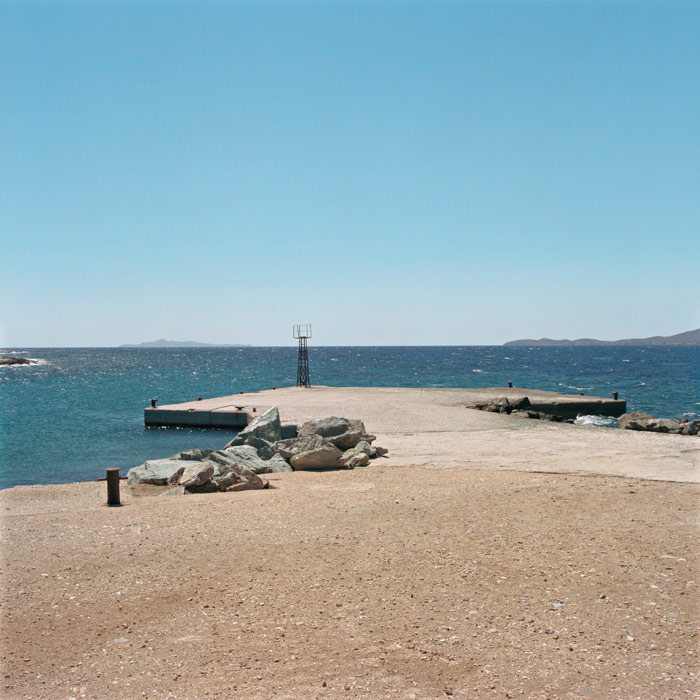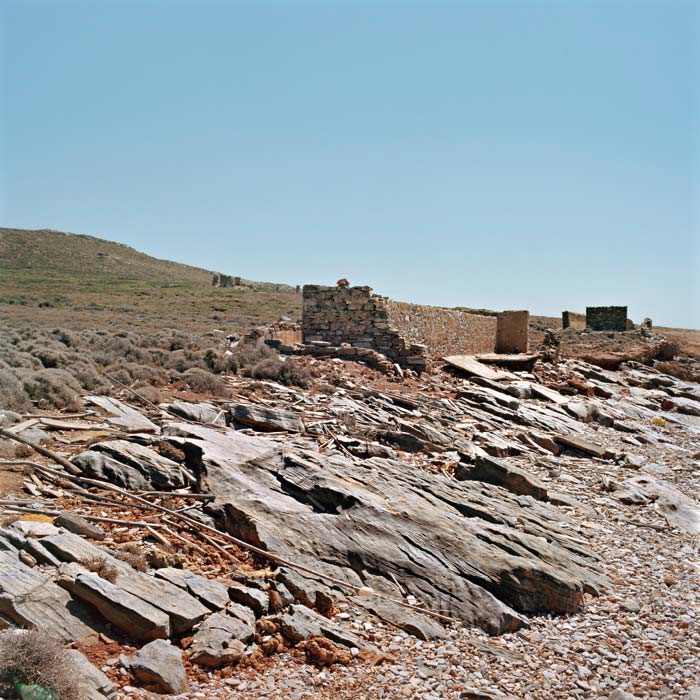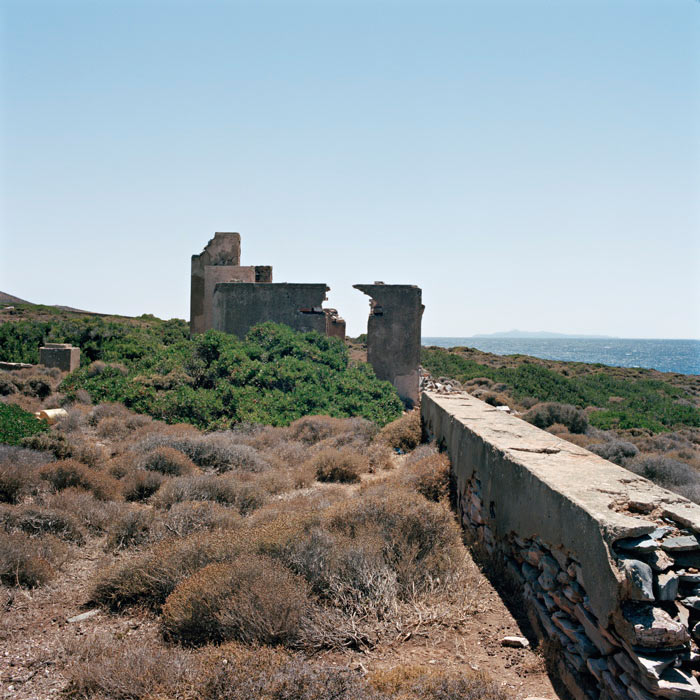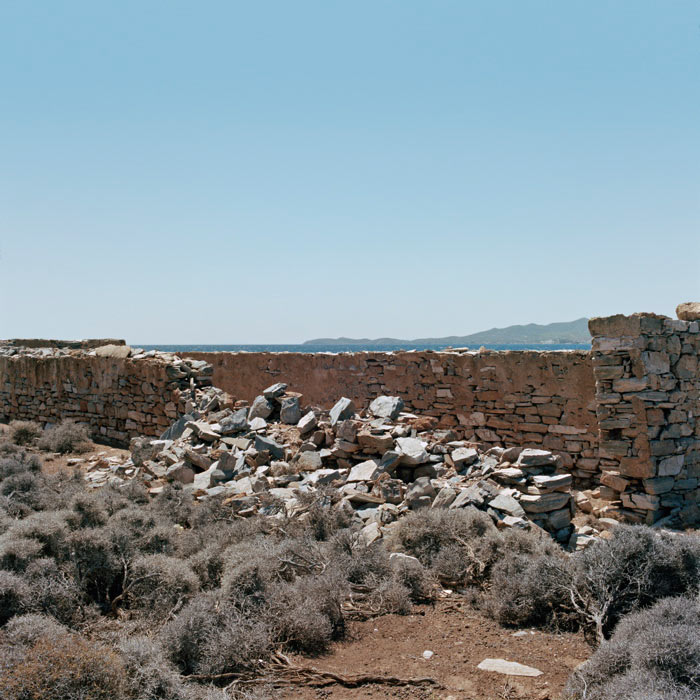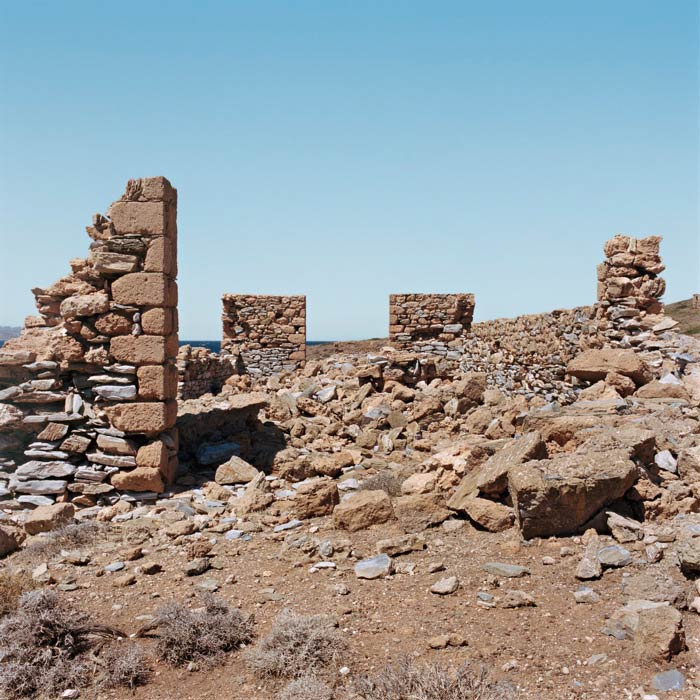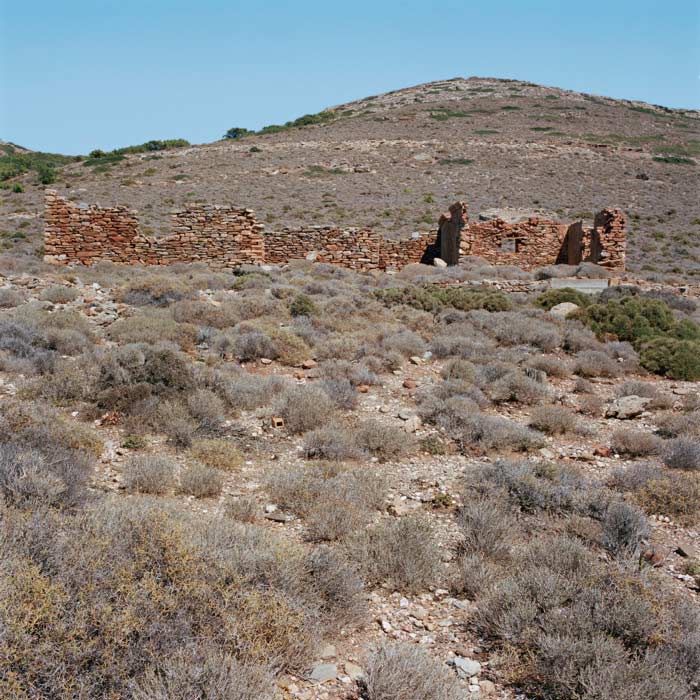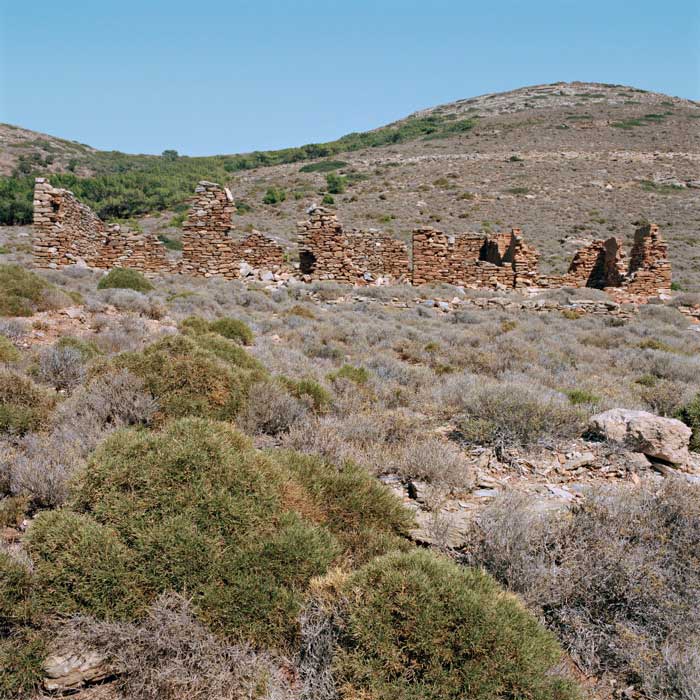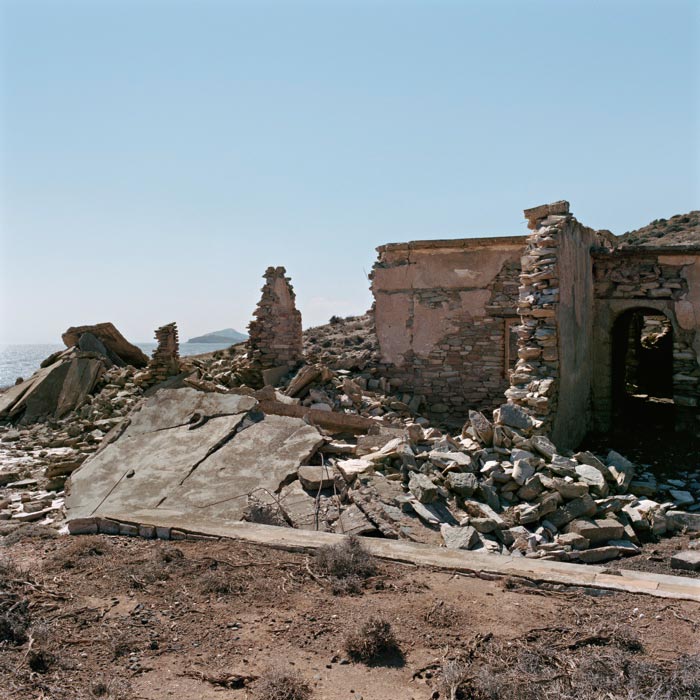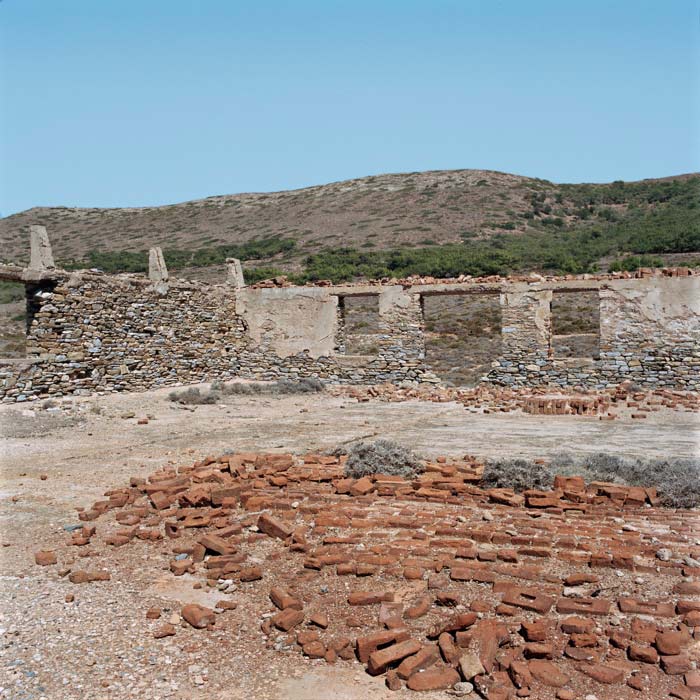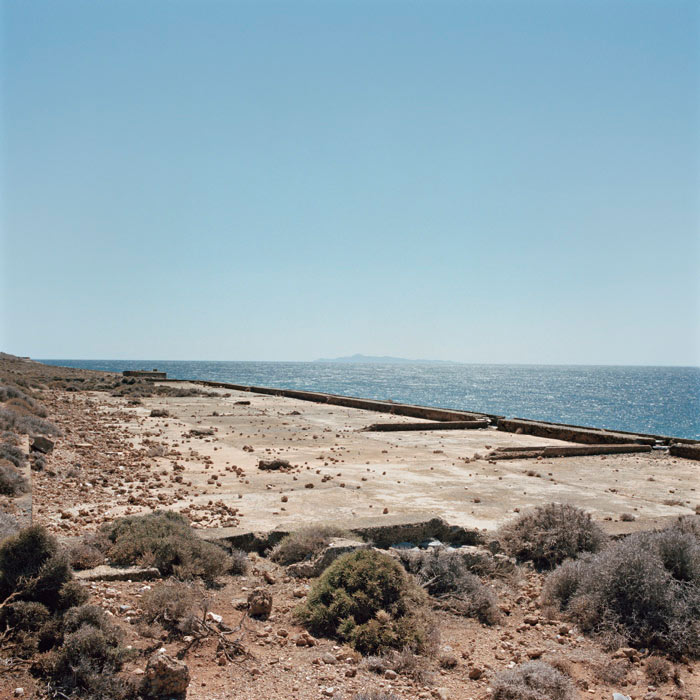Makronissos est une île sans eau ni forêt, proche d'Athènes. C'est là que furent internés les combattants du camp progressiste durant la guerre civile grecque (1946-1949). Makronissos a été le premier camp de concentration créé après la seconde guerre mondiale, par Churchill relayé par les USA. Les internés y furent "rééduqués", torturés, voire exterminés quand ils refusaient de signer la lettre de renonciation à leurs idéaux. Le camp fut fermé en 1955 à la suite des protestations d'intellectuels européens comme Jean-Paul Sartre ou Louis Aragon en France. Cette île reste de sinistre mémoire pour tous les Grecs. Alors que la reine de Grèce, pro-nazi, comparait l'île à la nouvelle Parthénon car les prisonniers y avaient construit les bâtiments leur servant de prison, ceux-ci tombent en ruine depuis 1955. Y faire des photographies posait la question : comment éviter d'évoquer la ruine antique et sa beauté alors que tout s'y prête sur place. L'île est battue par les vents et écrasée sous le soleil brûlant.
Makronissos is an island without water or forest, near Athens. It is where the fighters of the progressive camp were interned during the Greek civil war (1946-1949). Makronissos was the first concentration camp created after the Second World War, by Churchill and the USA. The internees were "re-educated", tortured and even exterminated when they refused to sign the letter of renunciation of their ideals. The camp was closed in 1955 following the protests of European intellectuals such as Jean-Paul Sartre and Louis Aragon in France. This island remains of sinister memory for all the Greeks. While the queen of Greece, pro-Nazi, compared the island to the new Parthenon because the prisoners had built the buildings serving as their prison, these have fallen into ruin since 1955. To take photographs there posed the question: how to avoid evoking the ancient ruin and its beauty when everything on the spot lends itself to it. The island is beaten by the winds and crushed under the burning sun.
